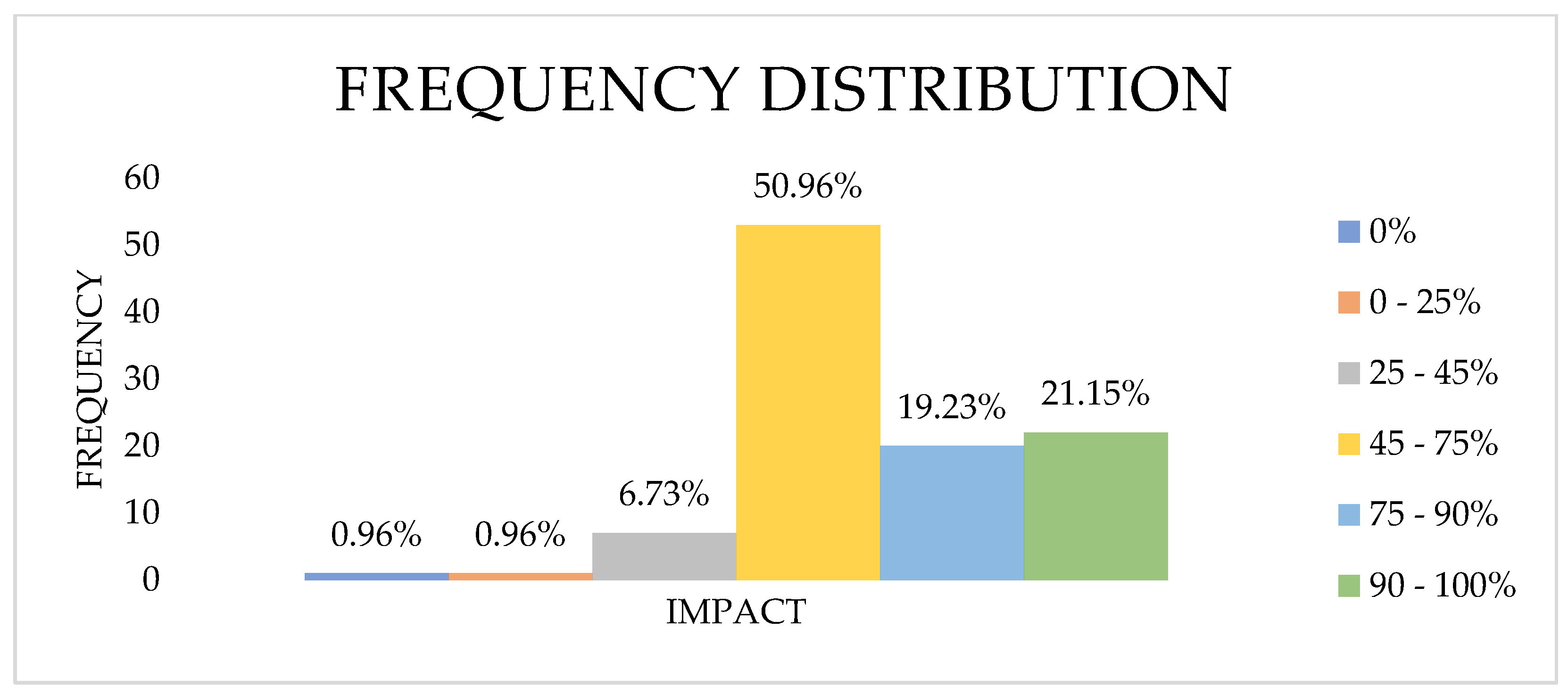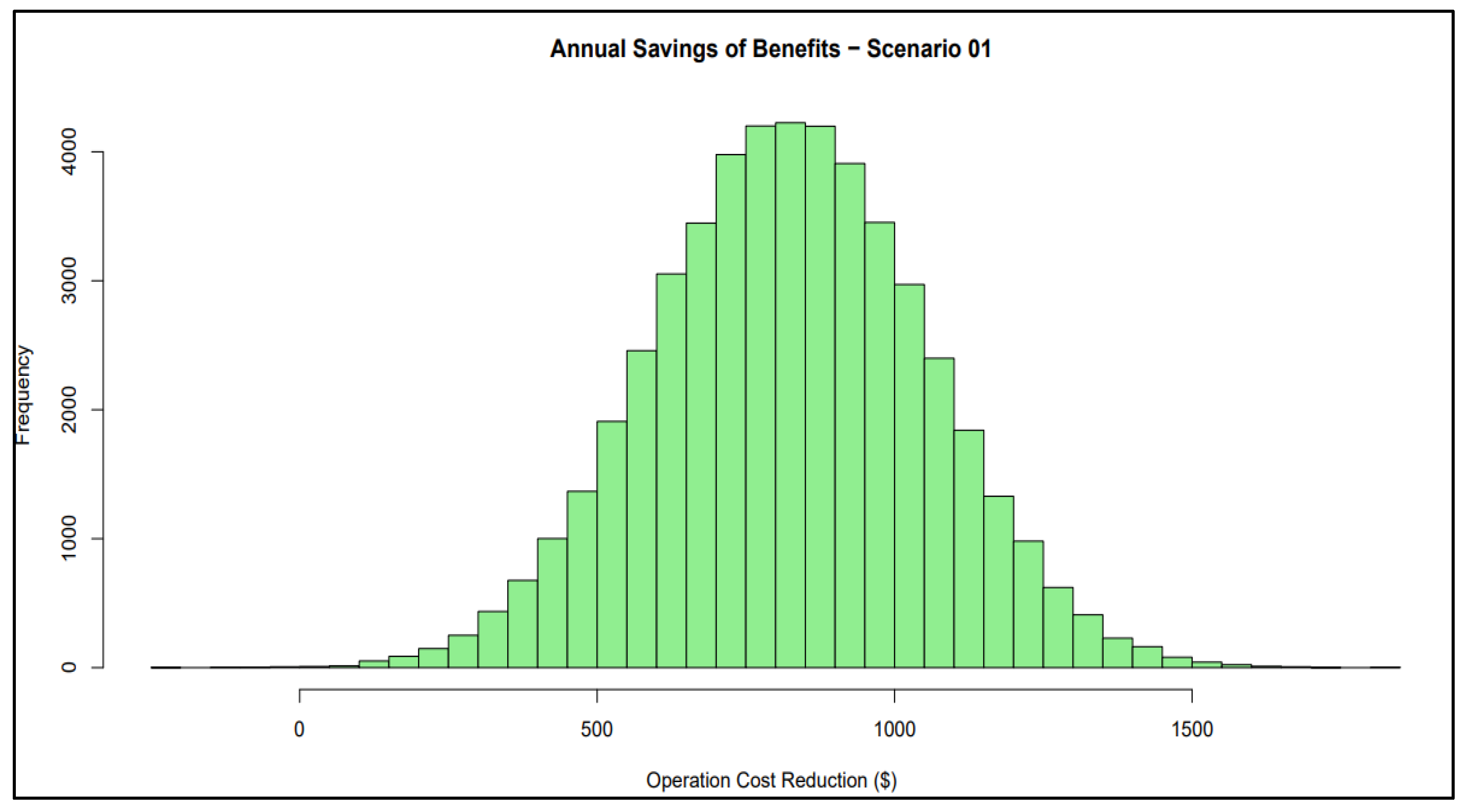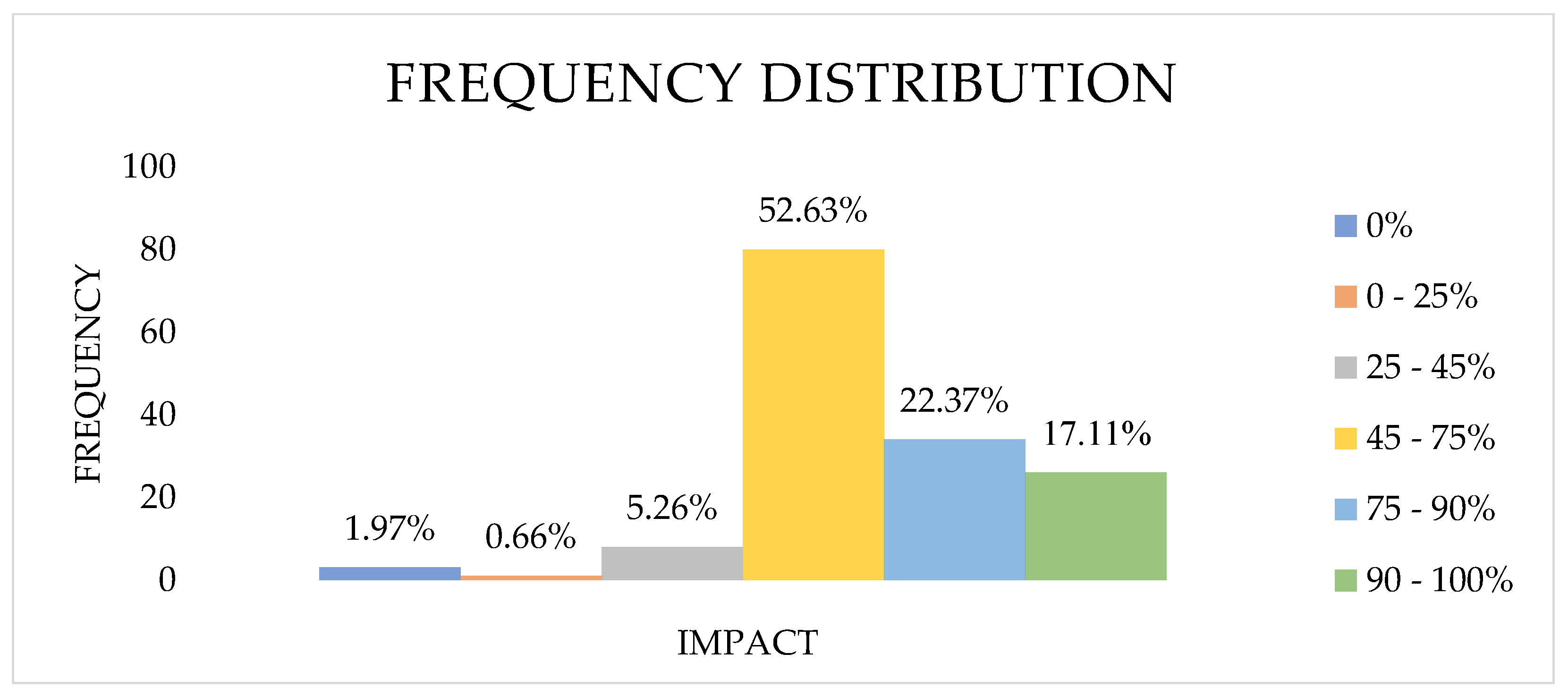1. Introduction
Water distribution models are the subject of numerous scientific works that aim to approximate the values observed with the aid of pressure and flow measurement equipment to those calculated from developed hydraulic models. To increase their reliability, the correct determination of water consumption is a very important factor. The great variability and randomness of the patterns of use of water resources greatly impair the adoption of the correct values for the flow and demand, a fundamental parameter for the accuracy of the results of the proposed models.
In this sense, there are many works dedicated to elucidating the problems of demand determination.
Carpentier and Cohen (1991) [
1] presented a technique to estimate the demand and leak detection using the flow values of pipes in a steady state.
The hypothesis of the study by Buchberger and Wu (1995) [
2] is that residential water use can be characterized by three variables: intensity, duration, and frequency since these three properties can be modeled as an inhomogeneous process of rectangular pulses.
Kumar et al. (2008) [
3] proposed a method of estimating the state parameters for well-instrumented distribution networks. The method was applied to two urban networks, considering the measures of the flow in the pipes, pressure at the nodes, and values of water demand.
Torrent and Pérez (2020) [
4] modeled the average daily water consumption from real-time flow data from several measurement districts using potential curves.
In this context, smart water consumption measurement can provide consumption data in a much more specific spatial and temporal resolution, that is, at the individual consumer level and in small time intervals, allowing the use of analysis tools for more accurate characterizations of consumption profiles. The use of smart meters provides essential information for understanding consumer behavior models that can be used to modify behavior-favoring water savings.
In addition to being an important tool to assist in the construction of consumption patterns, measurement with smart meters allows the construction of useful models for leak detection, reducing losses, and improving demand management.
Cominola et al. (2020) [
5] considered that the adoption of an intelligent measurement system must go beyond the simple automation of the reading and reporting of consumed volumes. To know in-depth about the water consumption of users and obtain a system capable of carrying out commercial and operational management, it is also necessary to associate some factors with automation, namely information technology, data science, and other analytical skills.
For Sánchez et al. (2020) [
6], the emergence of the IoT has allowed the construction of smart buildings and cities, capable of better managing their water, energy, and even urban mobility infrastructures. According to the authors, this new technology will be able to transform the operation of water supply systems.
For King and Gage (2017) [
7], the Internet of Things is a turning point when it comes to risk management and claims forecasting.
Similarly, Monks et al. (2019) [
8] revealed that advanced measurement infrastructures, which allow the automated measurement of water meters at predetermined intervals (generally hourly or every 4 h), means the increasing availability of large sets of data, which opens the world of big data so that water utilities can use data mining to better understand their business. However, according to Monks et al. (2019), the implementation of automated water consumption measurement by itself does not bring the potential benefits that have been associated with it. In addition to implementation, concessionaires also need to evolve their systems, processes, and resources, offering new services.
Finally, the work by Monks et al. (2020) [
9], based on the opinions of experts in the water supply system in the Australian market, proposed probability distributions that can be used to model the financial return of the benefits arising from automated metering.
Thus, the present work focuses on Quadra 12 of the Jardins Mangueiral Housing Sector—SHJM—in the city of Brasília/DF, Brazil, to evaluate the benefits of the smart metering (SM) system implemented in the pilot project for the individualization of water meters. The residential condominium consists of 420 units, for which 424 meters were installed, including 420 for the residences (houses and apartments), 3 to compute the water consumption of the common areas, and 1 to determine the volume of water that supplies the condominium tank.
2. Materials and Methods
To assess the benefits of the SM system deployed, two scenarios were considered. The first considered the current reality, that is, only the automation of readings using the advanced measurement infrastructure. The second scenario, on the other hand, evaluated the possible impact of automating the readings using the advanced measurement infrastructure, establishing a leak alarm system in the consumer units, and establishing a detailed water balance, which may be temporary or permanent District Metered Areas (DMAs).
The method used to evaluate the benefits of implementing the automated metering system in the condominium is presented here in two stages. The first consists of the identification of the possible benefits, whereas the second stage deals with the estimation of the reduction of the operational costs from the data provided by the research of Monks (2020). The two steps are detailed below:
First step: In this step, all the benefits presented by Monks (2019) were compared with the benefits identified in the specific case of the condominium for each of the proposed scenarios. A table was prepared that contained all the identified benefits that arose only from the automation of the readings using the advanced measurement infrastructure, as well as another table that contained all the identified benefits that resulted from the automation of the readings using the advanced measurement infrastructure, the establishment of a leak alarm system, the installations of the consumer units, and the establishment of a detailed water balance, which may be temporary or permanent DMAs.
Second step: In this step, having collected the data referring to the research carried out by Monks (2020) in Australia together with specialists in water supply, the distribution of frequencies was constructed relative to the impact percentage estimated by the specialists on the operating costs of the benefits identified in scenarios 01 and 02. The distribution represented how much of an impact a benefit, on average, had on reducing operating costs. Then, the operational cost reductions that each of the identified benefits represented were determined. Thus, from the frequency distribution and the operational cost reductions of the benefits, a Monte Carlo Simulation (MCS) was performed (50,000 iterations), whose results were a normal distribution curve of the possible operational cost reduction values. As a reference for the calculations, the percentages (according to the calculated benefits) of the operating costs per connection in 2019, as presented by Caesb in its Financial Statement 2019, were used. This assessment was intended to show the return cost-effectiveness of remote water consumption measurement solutions, considering each of the two scenarios.
4. Discussion
It is important to clarify that the benefits identified in
Table 1 and
Table 5 refer to those calculated with an impact only on the water utility and to those calculated with an impact only on the users, and it is necessary, therefore, to stipulate the origin of the resources for investors (concessionaire or user) for when they intend to carry out an economic evaluation of this type of project.
However, in the comparison of the two scenarios, it was found that the second scenario presented a financial return that was 8.5 times higher than the first scenario, which makes clear the importance of intelligent measurement going beyond simple automation and reading and the preparation of reports on volumes consumed. It is evident, therefore, that a remote reading project must be able to extract all the benefits that a system can offer, such as the provision of new services to consumers; improvements in demand forecasts and revenue from advanced data analysis, which considers data other than consumption; the establishment of a good capacity for analyzing meter data, measurements, and consumption categories; and increasing knowledge about consumers and network assets, among others.
5. Conclusions and Recommendations
The benefits of smart metering are not restricted to remote reading; there is a positive impact on financial management, the cost of providing the supply service, the cost of using the supply service, and the safety of users. However, it is important to point out that the achievement of all the benefits that remote measurement provides depends on the development of other requirements and tools such as those exemplified in this work.
Based on this work, the need to develop research that evaluates the impact of remote measurement in a regional scenario has been identified, considering the systems already implemented, for the development of new qualitative and quantitative impact assessments.










